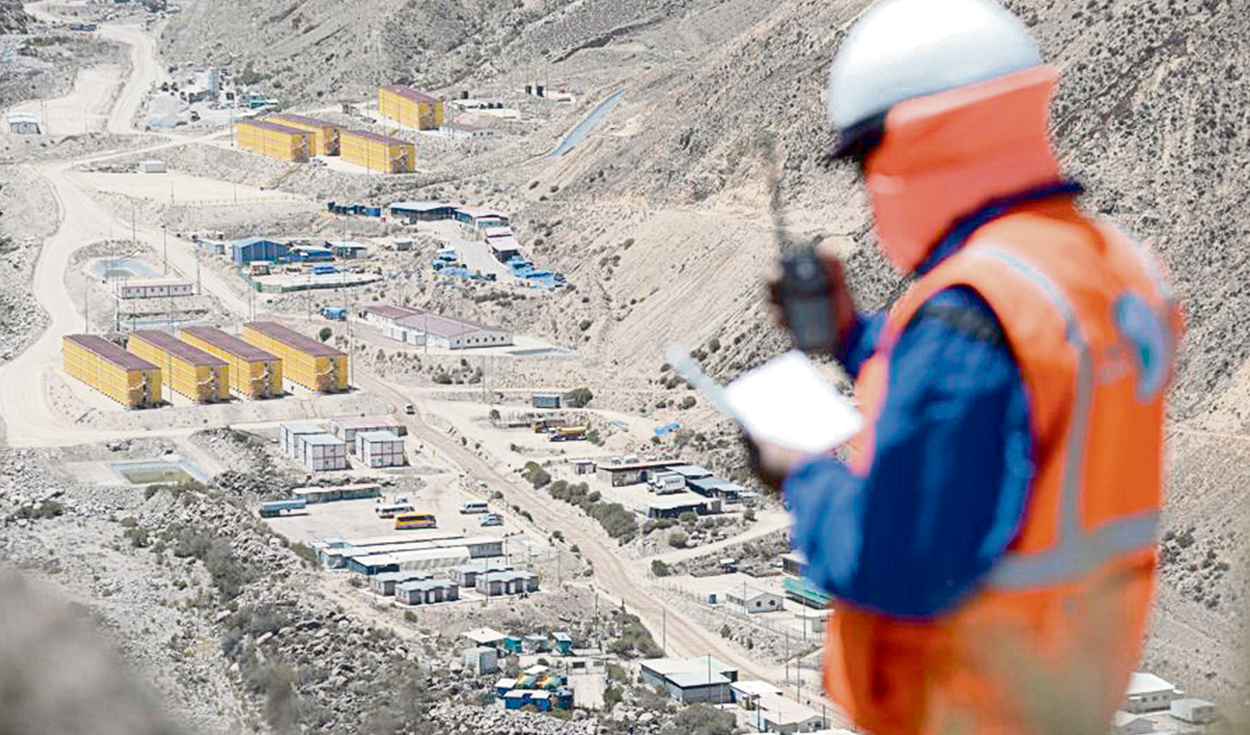
In 2022, private investment contracted 0.4% despite the country’s limited growth. A year later, after the political turn of the Government of Dina Boluarte, who from her first day distanced herself from her predecessor Pedro Castillo, private investment has not managed to recover and will fall 7.3% in a period marked by recession, according to the Central Reserve Bank of Peru (BCRP).
It should be remembered that private investment covers 80% of the total and is the main generator of GDP. In the accumulated period from January to September it fell 8.9% and marks five consecutive quarters in the red.
Social conflicts and climate phenomena—Yaku and El Niño Costero—have dented the income and confidence of the private sector: these condiments explain the fall not only in private investment, but also in domestic demand, according to Julio Velarde, president of the BCRP.
On the other hand, mining investment will drop 14.1% in the absence of megaprojects of the caliber of Quellaveco.
Growth engine not working
The -7.3% rate forecast for private investment represents the fourth worst drop since 1999 (-15.2%) or the largest since 2009 (-8.8%) – not counting the pandemic – (-16.5 %), according to BCRP data collected by economist Juan Carlos Odar.
Meanwhile, reviewing private gross domestic investment, it fell from 17% of GDP to 14.5%, which “reflects how our growth engine has lost strength,” in the words of former Minister of Economy and Finance Alfredo Thorne.
The main problem is the lack of dialogue with the business community – Thorne maintains – since the regulations are “very restrictive” and do not allow the potential of the sector to take off, and therefore, he warns that despite the rebound that is estimated at 1.8% By 2024, this will not be enough to straighten the destiny of the Peruvian market considering the prolonged deterioration of corporate expectations and political uncertainty.
“There are 46 billion dollars in mining projects, but they are not promoted (by the Executive). Besides, they are restrictive with permissions. You have to negotiate with more entities and the processes last up to ten years, when in countries like Canada they take one or two (years) at most,” he mentioned to La República.
Thorne does not call for the abandonment of environmental criteria or dialogue with social communities, but rather urges the Government to emerge from its lethargy.
Not everything is gray. Julio Velarde acknowledged that there is interest despite the adverse events. “This is (based on) conversation that has been had with companies, it is not our estimates alone. Some projects that are delayed seem to be coming out, there are mine expansions that are also coming out,” he told the press at the presentation of the December Inflation Report.
The BCRP details that until 2025, private investment is expected to advance thanks to mining with the construction of Phase II of the Toromocho Expansion and the construction of the Antamina, Zafranal and Corani Replacement. Meanwhile, in non-mining investment, the works at the Jorge Chávez airport and the Chancay megaport stand out, as well as the progress on Line 2 of the Lima Metro.
Lower consumption and the Peruvian profile in recession
Private consumption will barely have a variation of 0.2%—its weakest figure since 1999, according to the BCRP—which reflects the deterioration of citizens’ income and spending capacity. Specialists maintain that the loss of confidence is not only in business, but also in the consumer, who, faced with the contraction of income, changed their money management tendencies.
A recent tyba report by Credicorp shows that 47% of Peruvians consider it impossible or unlikely to invest in the next six months considering the lack of predictability that plagues the country: the threat of El Niño and “the political disaster.” Another 26% acknowledge that they live for their debts.
Figures
- Private consumption will barely grow by 0.2%. Its lowest level since 1999.
- -14.1% mining investment will fall. In 2024 it will rise 5.1%.
- 2021 started business pessimism after the pandemic.
Source: Larepublica
Alia is a professional author and journalist, working at 247 news agency. She writes on various topics from economy news to general interest pieces, providing readers with relevant and informative content. With years of experience, she brings a unique perspective and in-depth analysis to her work.











